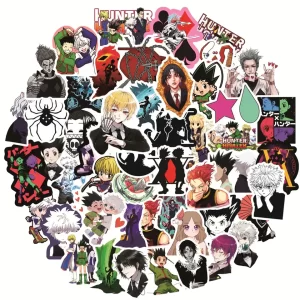Back in the day, not even too long ago, the process of purchasing and playing games was much simpler than it is today.
Back in the day, not even too long ago, the process of purchasing and playing games was much simpler than it is today. It used to be that you could go to any old GameStop and pick up a copy of any old game, or just simply download the title from any platform of your choosing. Now, I know what you just said, “Haseeb, it isn’t any different today. I still just buy and play games the same way I have been doing for years.” What if I told you that that isn’t true? What if there has been a change in how we all obtain our games that have gone unnoticed by the majority of people?
Before I explain the differences of the process of obtaining games, between a few years ago and now, we must discuss how things have changed on how we are sold games between that time span.
The Good Old Days
From the dawn of video games, up until the networking revolution, games were sold as one singular package. If you went out to buy the cool and critically acclaimed Super Mario 64 in 1996, you would go out to your local game store and purchase the cartridge, race home, and enjoy 100% of everything that game would have to offer. Even typing that out fills me with a sense of longing for such simplistic days. That’s just how things were for a long while. But, with the release of the seventh generation of gaming consoles, came the widespread use of networking.
The cartridge inside the box would contain 100% of all content in the game
At the start, it was all cool and new. The ability to, almost seamlessly, talk, play, and compete with friends and strangers in mainstream consoles was something that, I think, blew us all away. It wasn’t until later in the generation that the implementation of paid downloadable content became mainstream. Ideally, the idea was that developers could provide extra content which would expand the game’s world and increase its lifespan. For the most part, this was exactly how this new way of adding content was used. However, as I’m sure we all know, there were exceptions to that rule.
The Start of the Trouble
Some developers and publishers would hold back, sometimes a large portion, of content in favor of charging the players extra for unlocking it. This is where the researching started. Now, before purchasing the game, people would have to hop on the internet and read about how this games extra, paid, DLC would function. How much did the DLC cost? How much content did the DLC add? Was it worth buying the game without buying the DLC? These were just some of the questions we were forced to ask if we even considered making a purchase. This causes, arguably just a little, bit of confusion. Now the process of purchasing and playing a game was just a little bit more difficult. A difficulty that was later expanded by the inclusion of season passes and, just a while later, the inclusion of microtransactions.
The description of the Gears of War 4 Season Pass. Notice the use of customized language such as “Elite Gear Packs”
That’s what brings us to today. Over the past couple of years, microtransactions have become to be expected from any triple-A title. Everything from Metal Gear Solid V: The Phantom Pain to the FIFA series feature and promote the idea of having the players spend some extra cash for some digital bonuses. Some games, notably League of Legends and Overwatch, have the inclusion of microtransactions for strictly cosmetic-only bonuses. I believe that there is an argument to be made for the popularity of this type of transactions being the reason that other types have taken off.
Microtransaction Mania
The other type of transactions that I am referencing are, of course, the ones people claim to be “pay-to-win”. These types of transactions have players pay in order to, not only purchase items that make the in-game player look cool, but also effectively increase the power of the player. The “pay-to-win” model has received a lot of criticism and, while it does exist in some console games, it is relatively uncommon when compared to the cosmetic and, the model I’m about to bring up now, the random loot model. The random loot model, popularly known as loot boxes, is a microtransaction that players can buy of which the outcome is “random”. Players may purchase many loot boxes and get different or even the same items out of them. These boxes may contain cosmetic items or items that enhance the player’s abilities in-game, or even a mixture of both. Loot boxes tend to have ranks; bronze, silver, gold, and platinum are common ways of dividing such loot. These ranks make it possible for publishers to charge for more rare loot.
Jheez, I’m just going to cut it off there. That’s a TON of information that I just wrote down, and I’m sure I haven’t even covered all of it. However, the purpose of this editorial piece isn’t to discuss how microtransactions work, but to discuss how this all affects our purchasing process. See, with the addition of microtransactions on top of DLC, players now have to extensively research what they are actually buying with their $60 ($80 for us Canadian chumps). We have to learn about what all the different currencies mean and how they will impact us while we play the game. Additionally, we still have to research the season passes/DLC and what they will actually include, and make a judgment on whether or not the publishers are holding back any content from the essential experience. All this just for one game. It seems that every single game nowadays has different currencies and systems in place that we are forced to learn about if we even think about playing the game. We have to consider EXCHANGE RATES of real money to in-game currency for god’s sake. I find that to be absolutely ridiculous.
In Conclusion
I’m not here to offer a solution to the issue. Many propose the “vote with your wallet approach”, but we all know that that will never work in an industry as big as this one. The contents of this article are just some things to think about. Hope to generate a discussion based on this topic. If anyone reading this has a solution to offer I’d love to read about it in the comments below!












